Home improvement professionals in January reported more job delays than anytime since before August 2021, according to the latest PRO Home Improvement Monthly Tracker from The Farnsworth Group (TFG) and Home Imrprovement Research Institute (HIRI). The culprit, says TFG Principal Grant Farnsworth, is likely the continuing material shortages and the lingering though still potent impact of COVID-19.
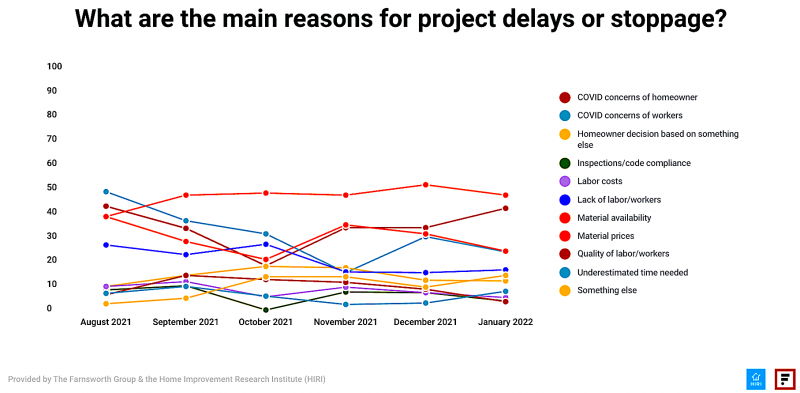
"For the first time in months we saw an increase of contractors saying theyve had project delays," says Farnsworth, who produced a video breaking down the tracker's latest results. "The main reason for those delays remain product availability but also we're seeing covid concers amongst homeowners creeping up as a leading reason for delays in project activities."
Product Availability
About 49% of contractors linked their delays to material shortages, a slight decrease from December 2021, when just over 53% reported the same issue. Seventy percent of contractors total are experiencing shortages.
While multiple product categories are suffering from constrained availbility, certain products and materials do appear to particularly hard to come by.
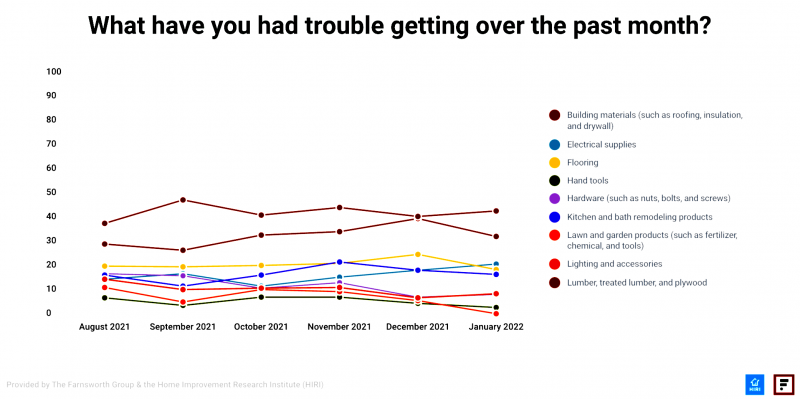
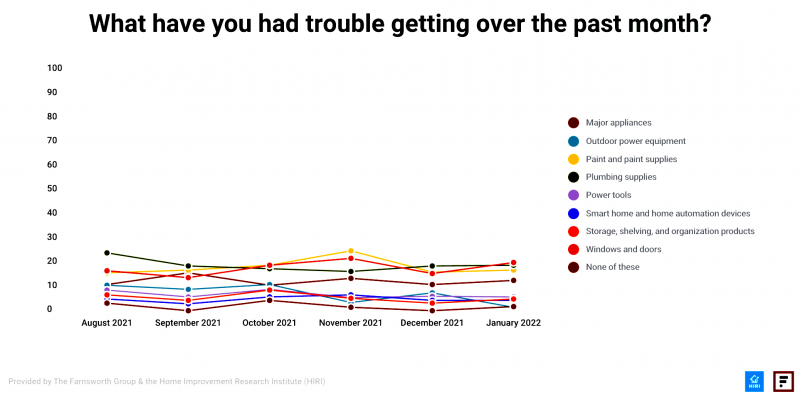
Continuing last year's trend, contractors most had problems purchasing lumber and plywood as well as roofing, insulation and drywall materials.
Product Price
Nearly three quarters of contractors reported experiencing at least some building material and product cost challenges in January, with 15% categorizing those problems as "severe."
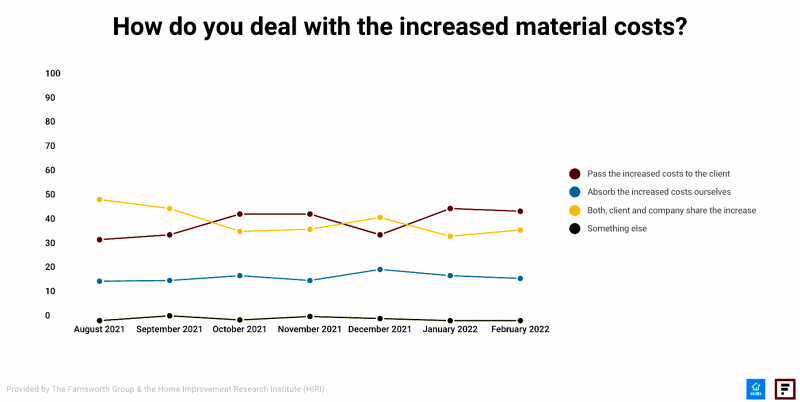
The latest data on how residential construction professionals are managing those setbacks, which include numbers from February, show contractors mostly waffling between two strategies: "pass the increased costs to the client" and "client and company share the increase."

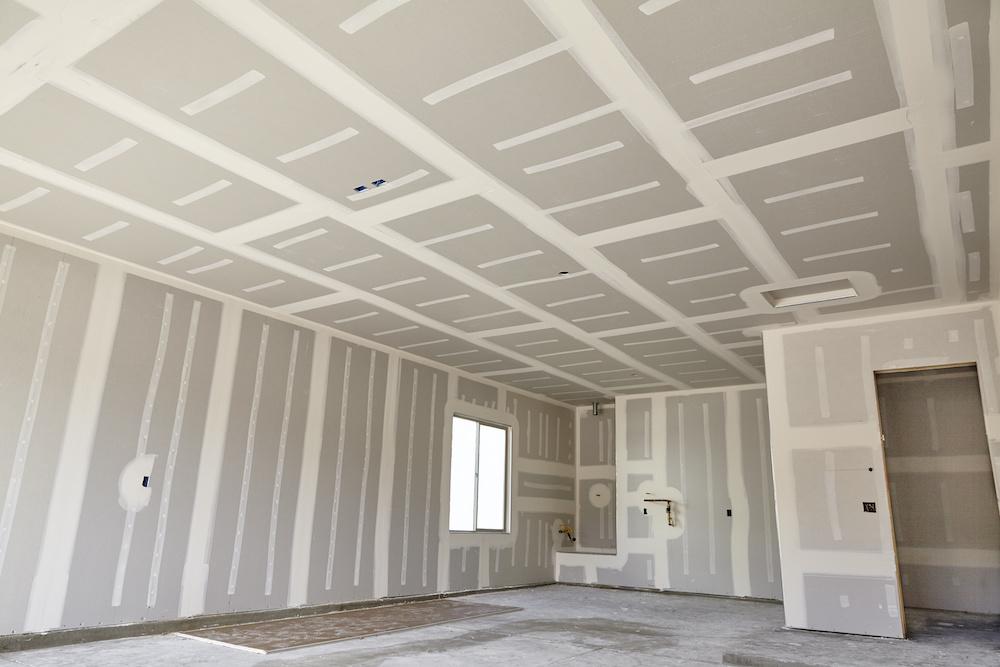
Add new comment